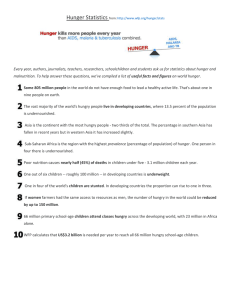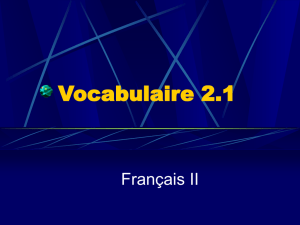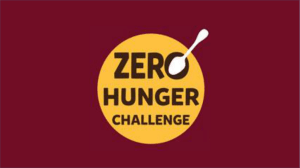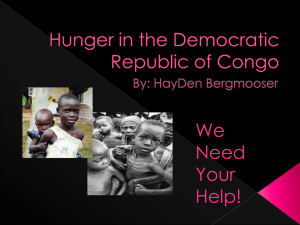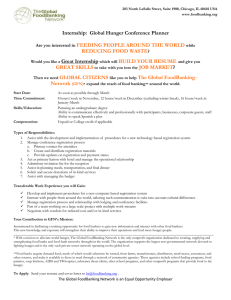Hunger Quiz: Global Food Issues & Facts
advertisement
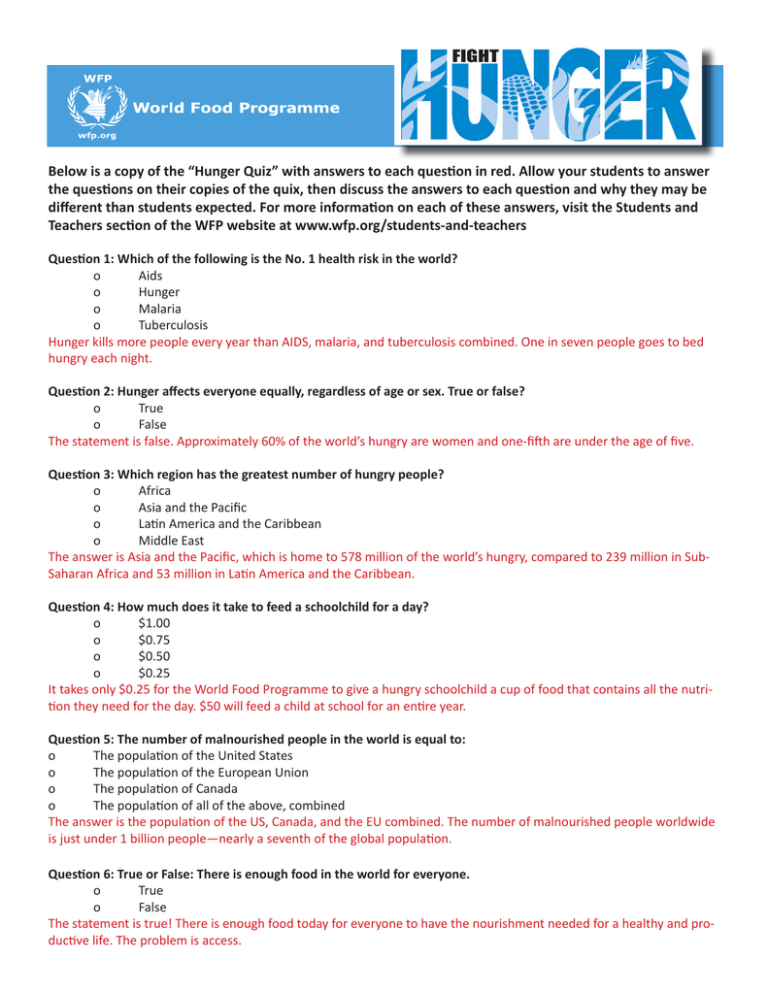
Below is a copy of the “Hunger Quiz” with answers to each question in red. Allow your students to answer the questions on their copies of the quix, then discuss the answers to each question and why they may be different than students expected. For more information on each of these answers, visit the Students and Teachers section of the WFP website at www.wfp.org/students-and-teachers Question 1: Which of the following is the No. 1 health risk in the world? o Aids o Hunger o Malaria o Tuberculosis Hunger kills more people every year than AIDS, malaria, and tuberculosis combined. One in seven people goes to bed hungry each night. Question 2: Hunger affects everyone equally, regardless of age or sex. True or false? o True o False The statement is false. Approximately 60% of the world’s hungry are women and one-fifth are under the age of five. Question 3: Which region has the greatest number of hungry people? o Africa o Asia and the Pacific o Latin America and the Caribbean o Middle East The answer is Asia and the Pacific, which is home to 578 million of the world’s hungry, compared to 239 million in SubSaharan Africa and 53 million in Latin America and the Caribbean. Question 4: How much does it take to feed a schoolchild for a day? o $1.00 o $0.75 o $0.50 o $0.25 It takes only $0.25 for the World Food Programme to give a hungry schoolchild a cup of food that contains all the nutrition they need for the day. $50 will feed a child at school for an entire year. Question 5: The number of malnourished people in the world is equal to: o The population of the United States o The population of the European Union o The population of Canada o The population of all of the above, combined The answer is the population of the US, Canada, and the EU combined. The number of malnourished people worldwide is just under 1 billion people—nearly a seventh of the global population. Question 6: True or False: There is enough food in the world for everyone. o True o False The statement is true! There is enough food today for everyone to have the nourishment needed for a healthy and productive life. The problem is access.
